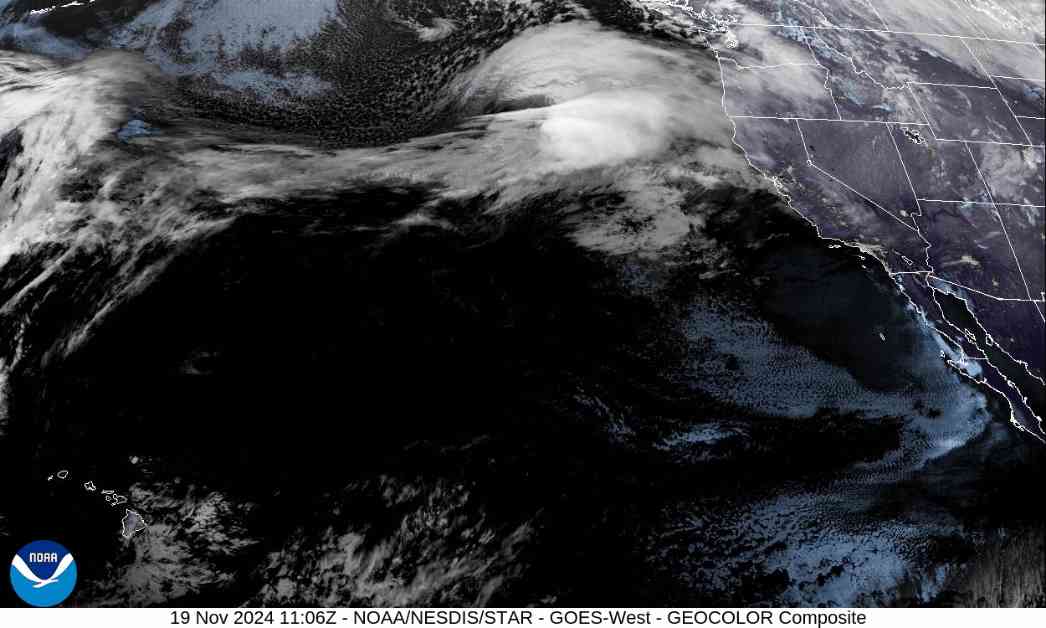A weather satellite recently captured a timelapse of the “bomb cyclone” that is expected to bring hurricane-like conditions to the West Coast between today and Thursday. The National Oceanic and Atmospheric Administration’s (NOAA) Geostationary Operational Environmental Satellite (GOES)-West satellite took images of the approaching weather system on Tuesday morning.
This storm is predicted to hit northern California, Oregon, and Washington with strong winds, flash floods, and heavy rain and snowfall as it rapidly intensifies through a process called “bombogenesis.” Climate scientist Daniel Swain mentioned that the cyclone’s intensification rate could make it one of the strongest low-pressure systems in the region, with the potential to generate hurricane-force winds offshore and waves up to 60 feet in height.
Bomb cyclones form when warm and cold air masses collide, causing pressures to drop and storms to intensify quickly. These low-pressure zones also draw tropical moisture northward through atmospheric rivers, resulting in heavy rainfall. While the role of climate change in storm intensification like this one is not entirely clear, scientists have noted that warming oceans are increasing moisture in the atmosphere, providing weather systems with more energy.
Professor Chris Brierley, a climate scientist at University College London, explained that the increased severity of storms, with heavier rainfall, is a consequence of a warmer atmosphere and higher saturation of vapor pressure. The projection of more intense storms due to climate change is becoming a reality, and the impact is evident across various weather events.
It is essential to monitor these weather patterns closely and stay updated on any developments to ensure safety and preparedness in the face of extreme conditions. The increasing frequency and intensity of such storms highlight the importance of addressing climate change and its effects on weather systems worldwide. Stay informed and take necessary precautions to stay safe during severe weather events like the bomb cyclone approaching the West Coast.










